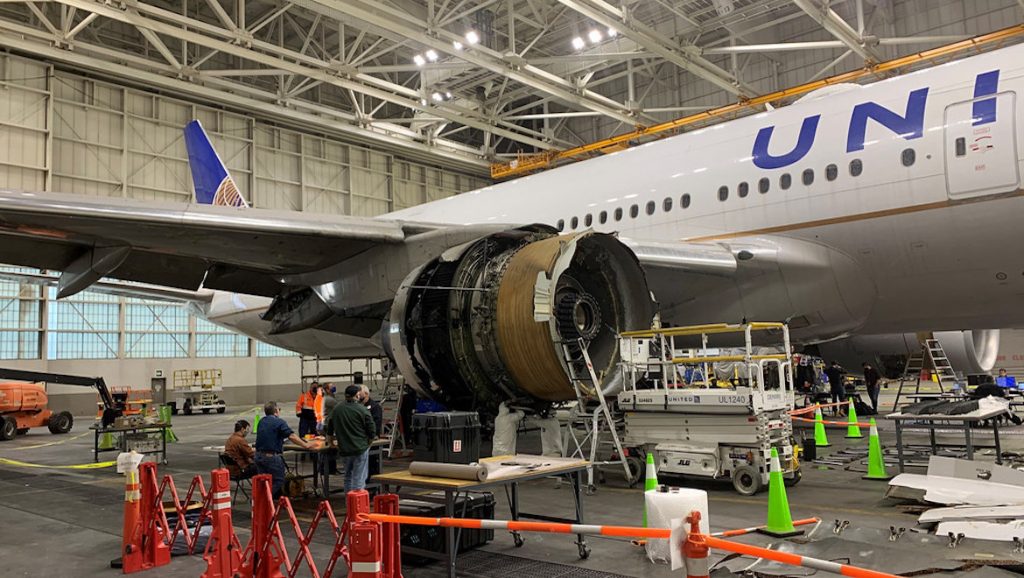
The engine that failed and caught alight on a United Airlines flight on Saturday had performed less than 3,000 cycles, under half the number required between engine blade inspections, according to sources close to the matter.
Under Federal Aviation Administration guidelines, the Pratt & Whitney PW4000 series engine that is used on the United 777 is supposed to be inspected every 6,500 cycles, in light of a separate United engine incident that occurred in 2018.
Meanwhile, engine maker Pratt & Whitney advised airlines on Monday to increase engine checks to once every 1,000 cycles.
The FAA is currently drafting an emergency airworthiness directive mandating the immediate inspection of all Boeing 777 aircraft with the relevant PW4000 series engines, before they return to flight.
The directive will see operators conduct a thermal acoustic image inspection of the large titanium blades located at the front of each engine, according to the FAA, for signs of metal fatigue.
Following its preliminary examination of the United failed engine, the US National Transportation Safety Board has said that the damage appears “consistent” with metal fatigue, making it a likely culprit for the cause of the failure.
There are around 128 planes in the world that would be affected by the FAA’s directive.
Less than 10 per cent of the global fleet of Boeing 777s utilise the Pratt & Whitney PW4000-112 engine.
On Saturday, a United Boeing 777-200, registration N772UA, was performing flight UA328 to Honolulu when it suffered an engine failure shortly after take-off from Denver.
The 26-year-old aircraft had 231 passengers and 10 crew on board when the right PW4000 series engine failed and caught alight at around 13,000 feet, and rained debris over homes and yards in Broomfield, Colorado, as passengers and witnesses looked on.










